A few weeks ago, I published an interview with Hugh Crichton that we’d done at Elephant Hill. That was actually just a precursor to what was then an entertaining and educational conversation that took place over the course of another forty minutes, in company of myself, Simon Swa, General manager at Elephant Hill, and Hugh. In this extract, we discuss more widely the direction of Chardonnay, the winery, Hawke’s Bay and more besides.
Simon Swa: So, did Hugh give you a glimpse of the future?
WineFolio: I think so. Not everything. I think he’s keeping some things back, some secrets! You may know, my number one rule is ‘delicious’. But after that I’m keen to see personality in a wine. If you say ‘easy going, drinkability’ – well I’d rather you left some stuff in that really makes me want to engage with that wine and remember it. I don’t remember bland wines. There’s a reason why the top wines of the world are what they are – they are unique and memorable, and don’t taste like everything else.
Hugh Crichton: We have a massive focus on getting things right in the vineyard, because once you get it right there, you don’t have to do too much from a winemaking point of view. Having a good range as well helps. That’s the approach from quality producers around the world. You can make just one Chardonnay, but you’ll never make a great Chardonnay. You’ll never make a terrible Chardonnay but it will never be great. You see it all around the world, from Burgundy, to Italy to new Zealand. They’ll always have the ability to declassify down to the next quality, which makes that wine better, but also helps the next wine down as well.
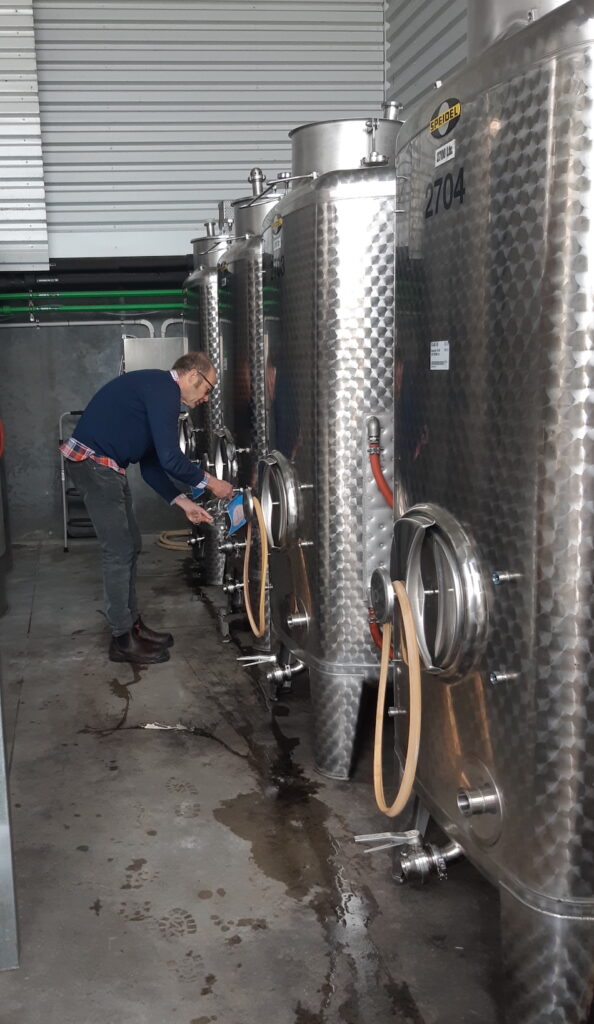
SS: Our approach here is that we do target everything at the upper-middle level as the starting point. So our mission is always to make Airavata, Hieronymus and Salomé. We pick the eyes out of the fruit for that, and then it is about sub-regional character. What’s left over goes into Estate.
Earth, Sea and Stone are our single vineyard expressions, but the aim is also sub-regional character expression. We want to display a character of that vineyard, but it actually could be the character of Gimblett Gravels, it isn’t just the Elephant Hill vineyard. We’re trying to walk this line of being wine geeks as we are, celebrating and loving sub-regionality, without boring the consumer. We thinks ours is a good reflection of Gimblett Gravels.
HC: You obviously do get differentiation though because the soil type can very different even within Gimblett Gravels. Where some of the old tributaries last ran, you get extra fertility, more canopy growth. I think the biggest difference comes with the viticultural influence – crop load. And then also the style aspiration – from the winemaker. You can pick Syrah in the Gravels and make acceptable style of wines with a difference of two or three brix. If you pick at 21 brix or at 24 brix you’ll actually make very different wines although both are from the Gimblett Gravels.
SS: Yes, so this is us waving our flag for Gimblett Gravels. And this area is another example, because I personally think Te Awanga Chardonnay, as a whole, is phenomenal. I love the stuff that Mat’s making for example. They are coastal Chardonnays but they’re all different.
HC: The common link obviously is the acidity. I do think Te Awanga Chardonnay has flown under the radar for a long time. Obviously there are some great wines that have been made here for a while, but for whatever reason it hasn’t really had the limelight. But I firmly believe that Te Awanga makes the finest Chardonnays in Hawke’s Bay.
WF: I think that the regional differentiation is happening across regions in New Zealand. In some ways Central Otago is further down the line, and perhaps because there you have to drive a distance from one to another – from Gibbston to Bannockburn to Wanaka. And I know that Sophie Parker-Thomson was talking about drawing up a map of Marlborough’s sub-regions when i talked to her recently. But I’m not sure that when people drink a Hawke’s Bay Chardonnay that they think of anything other than that? Strangely enough, I think there is more definition in the reds. Even when we were just down tasting the Syrahs – I said ‘Oh I love Bridge Pa Syrah’ – so I do it… but do I say ‘Oh I love Bridge Pa Chardonnay’?
SS: this is the story telling that we’d encourage you to start seeding, as Hugh has told you what we’re planting in Gimblett Gravels. We don’t mind if you love Hawke’s Bay Chardonnay – fantastic!
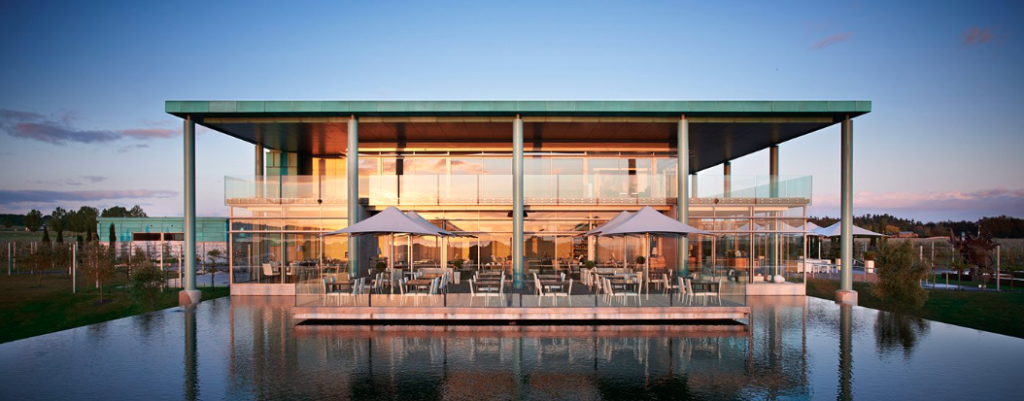
WF: Sometimes people will mention a vineyard they really like – like Riverview, or Skeetfield – without really knowing where those vineyards actually are? I talk to non-wine geeks all the time about wine, and I have to say they glaze over pretty fast if you start to get all intricate about things. If I start on about Solera systems or something my wife just kicks me under the table.
HC: I think it is more important for people to understand the wine styles they like, not where they are from. That’s the good thing about this sub-region – it gives nice natural acidity, and there are a lot of people who prefer Chardonnays with good acidity.
SS: What we don’t want to do is to say we’re going to press three chardonnays from the one pick – one high acidity, one with lots and lots of oak, and one rich and buttery style. Which is more contrived, and more confected. We’re trying to make it a lot more authentic. The reason why this Chardonnay is different from that Chardonnay is actually where it is from. Not from what you’ve done to it. So it’s this transparency through to people – if people care! But you’ll care differently to what a sommelier will care, to what a drinker might care…
WF: Or what people from overseas might care? Let’s not lose the fact that we’re sitting here in New Zealand and have a greater understanding of what some of those words mean, whereas you want to be on great lists across the world – not just love here. So, what does it mean to someone in Los Angeles?
SS: Yes, if there’s a Sea Chardonnay poured in a Michelin-starred restaurant in Berlin, then the evocative nature of a New Zealand sea, coastal Chardonnay means something, maybe something different. We could have gone down the route of ‘Te Awanga, Block 3 Chardonnay’ but we think that is less meaningful. The consumer glaze-over is quick.
HC: I still think it is important to reference the sub-region, on the back label for example. Because there are people who want to drill down, and are happy to spend a lot of money. By having a combination of the sub-region and the ‘Sea’ labelling, you are covering both. So, here are two Chardonnays – the one on your left is 2019 Sea, and on the right is 2019 Salomé.
SS: This Sea, Earth, Stone range used to be $75 a bottle. And when Steve found, say, an exceptional parcel of Cabernet Franc that would have gone into the Hieronymus, so let’s do three barrels of this by itself. So a limited production and release, and it’s rare and it is $75 a bottle. But I don’t think it spreads the story enough and it is not accessible enough a price point. So, the Earth, Sea, Stone range will be $59 a bottle. So, bring the price down and make slightly more of them. And make a lot less of the top wines.
WF: I picked up some of the new Kumeu River Estate Chardonnay yesterday, and I was a little surprised to see that it was selling for $40.
HC: It was the great steal. It was $25 a bottle not that long ago. Those lines are going pretty well overseas where they’ve got the markets for them. And I think it is a good thing. For all quality producers, you need to be getting the price to re-invest back in the vineyards, essentially.
WF: I do keep an eye on what’s being said overseas about New Zealand wines, and I think the release of the Hawke’s Bay Chardonnay 2019 box really got people’s attention. I think Cameron did a good job.
HC: Well, I actually gave him the idea about four or five years ago, and it took me a while to get it over the line. He tastes them blind and he selects what he thinks are his top twelve wines.
WF: Oh – so it’s not a question of “I want to create a box that is a representation of Hawke’s Bay” It is literally I like this, and this, and this?
HC: No, it just kind of turned out that way. It did turn out well in that respect because you have got some different price points.
SS: He struggled with the 2020 – because it was so good.
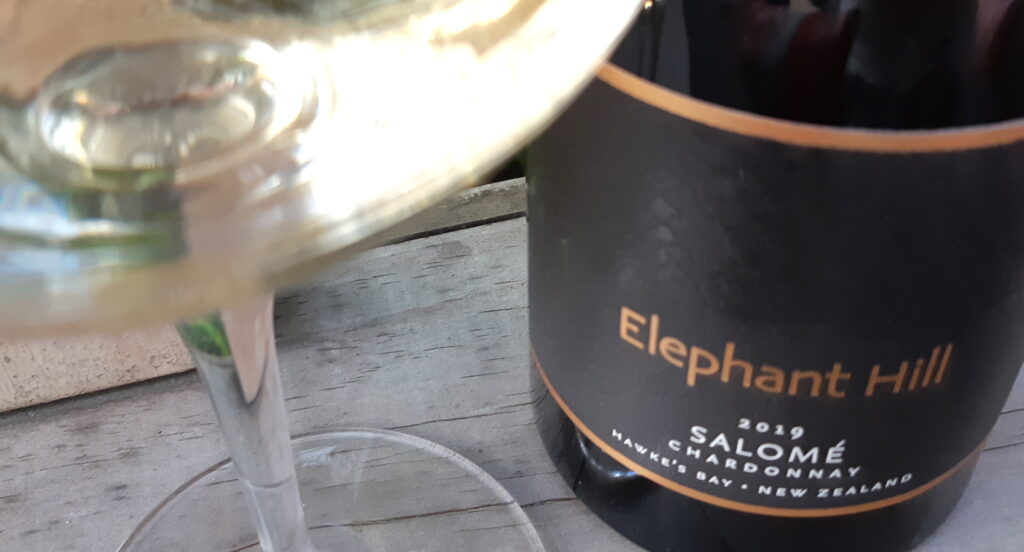
HC: On these two Chardonnays – fairly different wines, but the making in the winery is the same. The Salomé is about ‘our best expression of Chardonnay’ and it has been reviewed very well.
WF: I actually think that the Salomé is a bit of a bargain, considering that statement. It’s a pretty good wine for $75.
HC: I’m confident we can make it in most years now. Looking at what is in barrel, we’ve got some pretty good Chardonnay this year, and it was a challenging vintage. The beauty of Chardonnay, and it is one of the plus points for us in Hawke’s Bay, is that you can make acceptable styles at different levels of ripeness. With reds it is much more difficult. It gives you a lot more leeway and financial return, in not having to downgrade quality. I think a great Chardonnay I made personally is the 2012 Legacy Chardonnay – which was such a wet, challenging year. But if you’re selective in the vineyard and you only bring in good quality…
WF: So is that in your mind because of the challenge – that it is great wine despite the problems – or just that it is a great wine, anyway?
HC: I think it was one of the best, regardless. You have to wonder why? But I think, in challenging years, you’re much more alert as a winemaker. When It is easy, it’s almost cruisey. You can relax too much. But when it’s challenging, you really focus. But then I’ve always been quite an early picker of Chardonnay. It hasn’t bothered me. A lot of people were picking Chardonnay at quite high brix, but if you’re tuned to that and then you get a challenging year, and have to pick at 20 or 21 brix, then you may not pick. You might say you’ll push it and see if you can make it.
WF: Are you as confident in the other varieties going well?
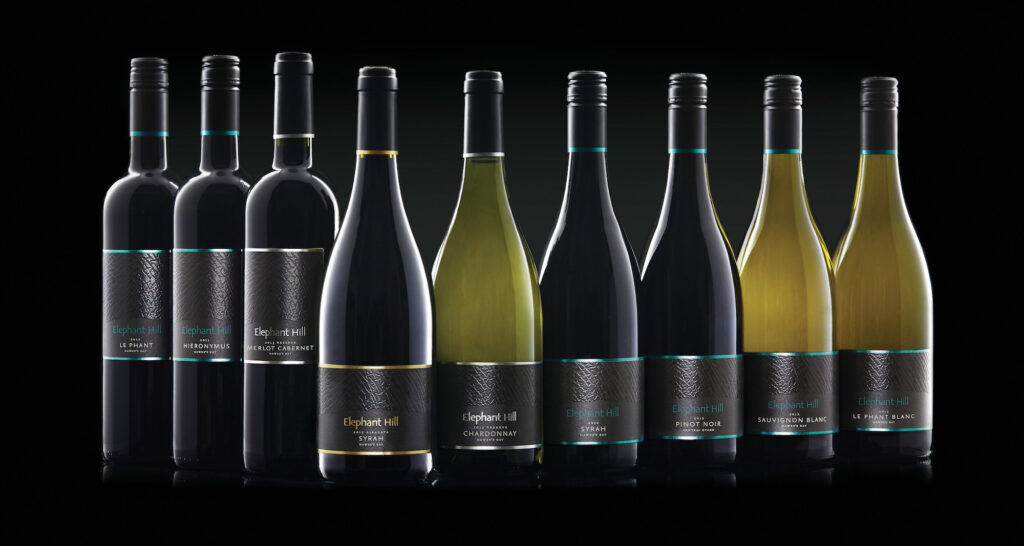
HC: Sauvignon is a massive opportunity I think, in Hawke’s Bay. With old french oak – hand-picking and whole-bunch pressing, like we do with Chardonnay. And making a wine that has real character, as opposed to just very fruity and thiol-y. There’s an abundance of fruit purity in New Zealand wines, full stop. And, arguably, too much. And we’re always going to have that, given where we are, with our maritime climate. I think there’s an opportunity to overlay that with character and interest. Whether it is natural ferment, or fermentation in old oak barrels, or whatever. It makes for more interesting wines. That’s the next stage of New Zealand wine development. It’s happening now anyway – with Chardonnay, and with reds that are lighter in colour and not so fixated with darkness.
SS: The response and demand that we see to Chardonnay is incredible – has it ever gone away? It’s growing if anything.
HC: There was a very anti-Chardonnay movement, led by some countries making over-oaked low-acid wines. But that’s starting to come off the landscape now and actually making wines now that consumers like. Not too oaky, freshness of acidity, balanced and drinkable wines. And New Zealand has been doing that for a few years now. Wines that people actually like drinking.
WF: I do also want to touch on the idea that good wines should be able to age well. But there’s also a theory that you shouldn’t keep a New Zealand Chardonnay more than 6 years? What do you think about that?
HC: That’s a bit of a generalisation. White styles are different. I’ve made a lot of Chardonnays that age beautifully – ten years plus. Also, some people like aged, not so fruit-purity, more complex wines. It’s a bit like old champagne. There’s not so much bubble, and the oxidised aromas have come through – but some people will love that wine. Well-made New Zealand Chardonnays, from the right area, don’t fall over like they used to. Back in the day when we picked too late and alcohols were too high, and not enough acidity – a New Zealand Chardonnay, you’d be lucky if it went for six years. But the styles change and it allows the wines to age.
SS: If you got to Soul Bar in Auckland Viaduct, they have our 2013 and 2014 Estate Chardonnays. We have a limited Library Cellar downstairs, and Soul Bar always wanted something older. So literally last month we sent them those. Our entry level. It’s beautiful. I’m sure they know exactly who is going to want to find that on their list. It doesn’t have to be a $175 bottle. The Estate Chardonnay is mostly from here, so it is a higher-acid, fresher, and gives it a bit of that ageability. I love the fact that we can demonstrate that with our entry level!
HC: We’re moving to an annual release program, and also actively holding some wines back for re-release with some age – which we’re starting to do now. As we talked about at the winery – so many people don’t age their wines, and then you say ‘buy this, it’s going to be great in ten years’ but actually they’ve never done that before, so how do they know what’s the right thing? So, by releasing small parcels of aged wine, from top wines right down – at an annual release event we can actually pull out an old wine and say ‘well this is what happens to it’. It is an education process which we’re going to engage in.
We move onto tasting some Syrah…
SS: I’m really excited by the ‘Sea’ Syrah. We made a very small quantity of that last year as a trial. It’s probably going to be the most challenging Syrah to sell. Well, if it’s delicious people will buy it. But most people’s perception of Hawke’s Bay Syrah is that it should be gutsy, structured, dark, spicy and inky. This is more like Pinot Noir.
HC: The ‘Stone’ on the left has got 1% viognier in it, and ‘Airavata’ on the right has no viognier in it. ‘Stone’ is 100% Gimblett Gravels, but ‘Airavata’ is 83% Gimblett Gravels as well, then 17% Bridge Pa. They spend the same amount of time in oak, which generally has been two years, maybe a little bit under, and then time in tank. It’s a little bit like what we tried in tank, but the ‘Stone’ has such amazing fragrance to it.
WF: The Gimblett Gravels wine is a bit lighter, brighter, with perfume and fragrance; whereas with the Bridge Pa element in ‘Airavata’ I’m getting deeper, darker notes, and a sweetness of fruit down inside. Great concentration and amazing acidity. There’s a lovely bloodiness to that ‘Airavata’.
SS: It’s bloody good Syrah! So in future you’ll be sitting in front of Earth, Sea, Stone and Airavata Syrahs.
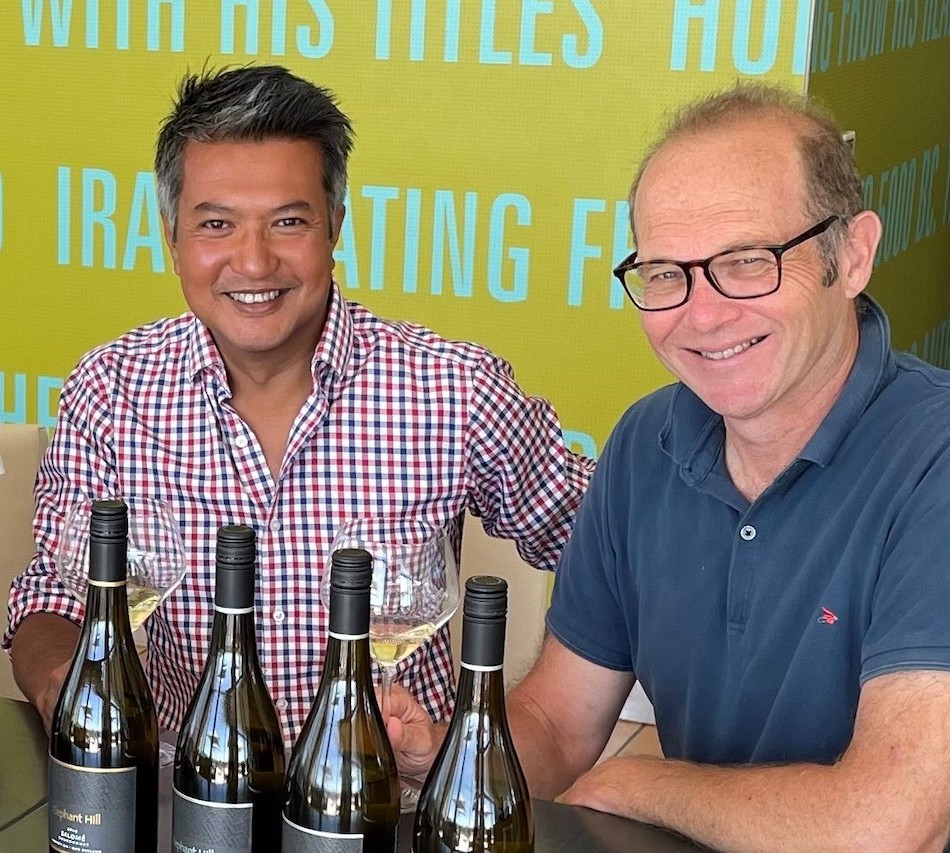
WF: That’s where it starts to get really interesting. I do think Syrah is a defining wine for Hawke’s Bay. I wonder why it hasn’t it hasn’t really taken over as that flagship varietal? Is it because there’s just not enough of it?
HC: I don’t know if it is just that. Perhaps we’re still coming a grips a bit with wine style. We probably often made Syrahs that were too big, chunky and oaky. The natural path for Hawke’s Bay Syrah is a bit lighter, not so infatuated with colour, and fragrance. Become a bit more restrained and elegant – I hate saying this, but closer to that Pinot Noir style. With the acidity, they’re always going to age well. As long as you’ve got concentration of flavour through low yields in the vineyard.
I wonder if there’s a bit of a disconnect between producers and consumers at the moment. There’s been big challenges in the past with Syrah where it has been over-cropped, too much pepper, too spiky, too skeletal. It’s like Pinot – you need to invest in the vineyard and get your crop levels down.
WF: I can see why you’re focussing on Chardonnay as well – because it is so good. It is easier for people to focus on one thing. So – Sauvignon Blanc – right, got that. Now – Pinot Noir – yes, right, got that too.. Whereas if you say ‘Hawke’s Bay – everything’s great!’ then where’s the focus? Yes, you’re a “Fine Wine Region” but it also helps if there’s one singular thing that is the message.
HC: It’s always been a challenge for Hawke’s Bay. I was quite involved with Hawke’s Bay Winegrowers. We’d have international VIPs and they’d get the tasting, which would be 32 wines and would be Chardonnay, Merlot, Syrah, Gewurztraminer, Cabernet Franc, Arneis – whatever met the quality standard! And they’d finish the tasting and we’d say “well what do you think?” And they didn’t know what to think! That changed about six years ago, and now they only ever taste Bordeaux, Syrah and Chardonnay. Just to try and get that messaging down.
But it’s really hard in a country where there’s no appellation system, and there’s no-one saying “you can’t do this”. Because when you’re told you can’t do something by law, then you can’t do it, but when you can do whatever you want…
SS: We’re trying to get more focus. In Burgundy you have Chardonnay and Pinot Noir. But focus is focus – that doesn’t mean it’s the only thing. I think these are the two beating hearts of Hawke’s Bay. Chardonnay is more scale-able globally. Syrah is harder. We don’t have much planted and the global demand is lower.
WF: Are people making Syrah that is more Pinot-like, because they think it is an easier sell – people already like our Pinot Noir – and people will like it more – or are they doing that because they think it is the best thing for the wine?
HC: I think it’s a happy coincidence. I think they’re making that way because they’re not so infatuated with too much oak, too much alcohol, and looking for lighter, fresher wines. We want to move away from contrived styles – adding too much in the winery to make something that is not natural for that wine, from that place. If you have a natural wine style that is driven by the environment then you can consistently make that style most years.


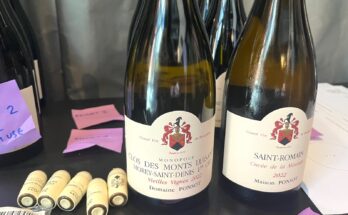
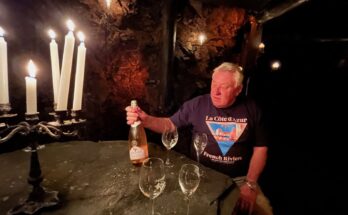
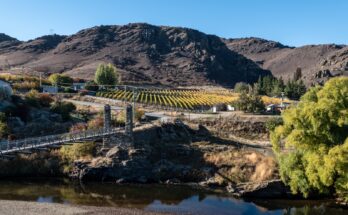
One Comment on “In conversation at Elephant Hill”